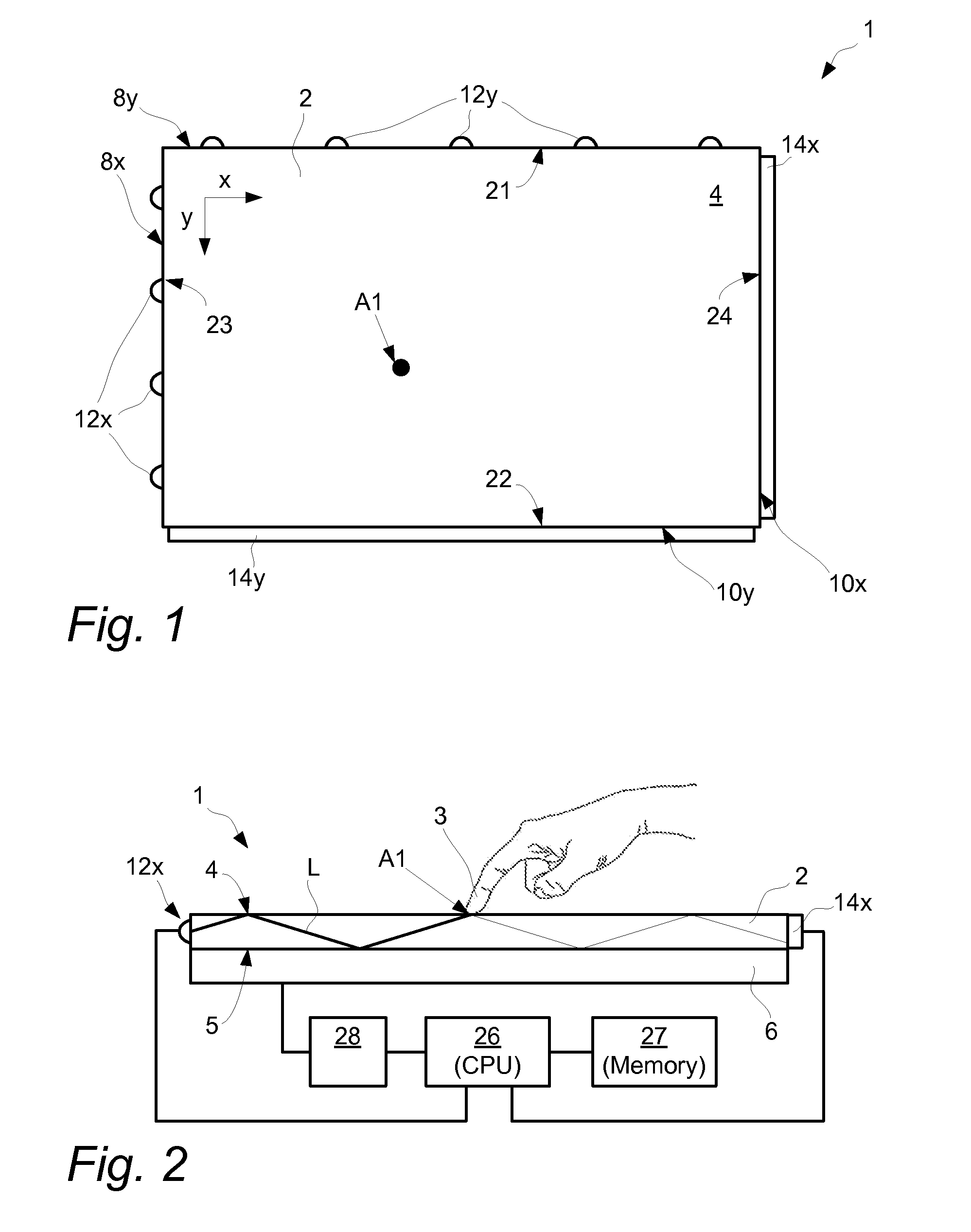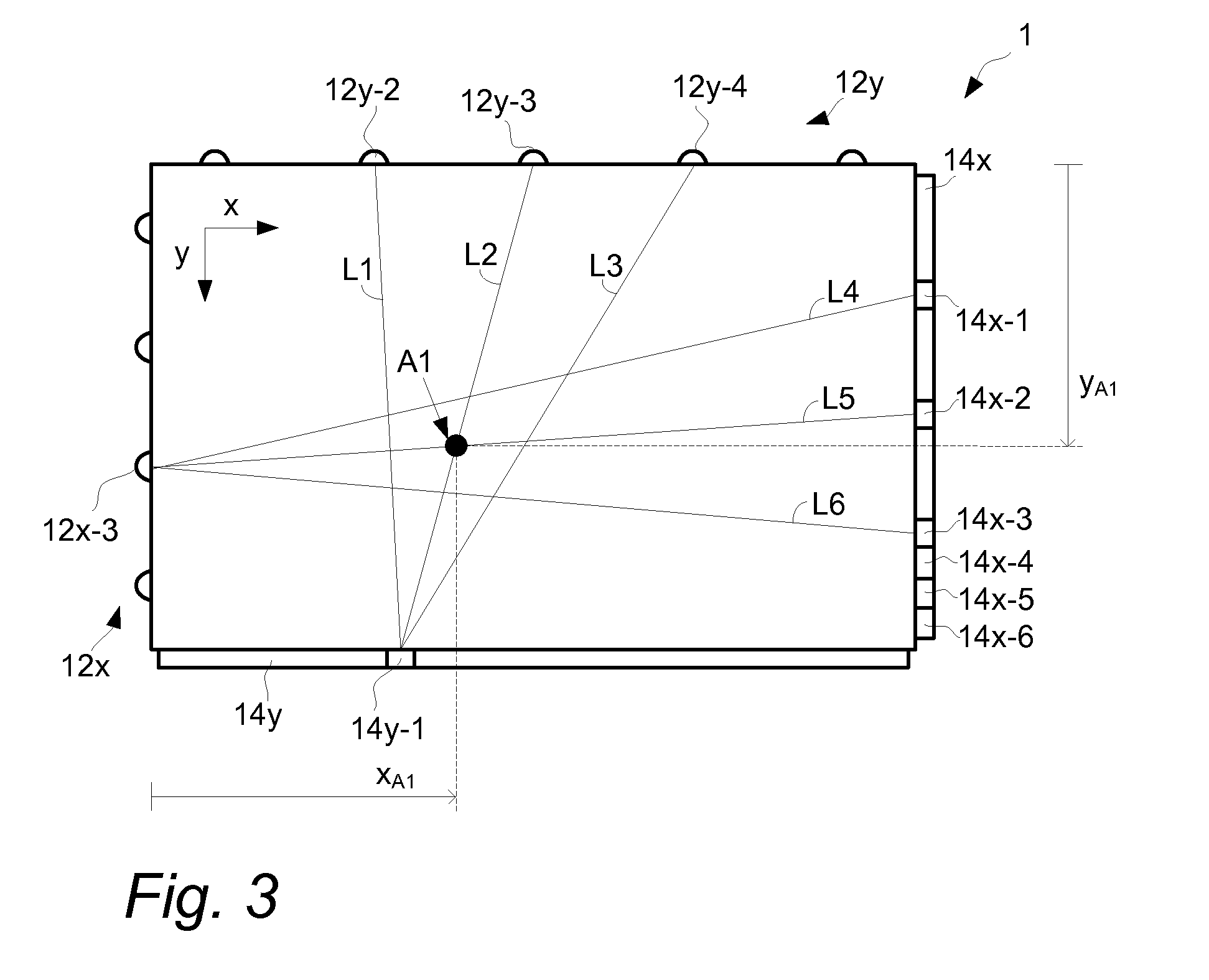Touch surface with identification of reduced performance
a technology of touch surface and performance reduction, applied in the field of touch-sensitive panels, can solve the problems of difficult application of techniques, difficult to distinguish a signal decrease, and loss of ability to accurately identify touches on the panel, and achieve the effect of reducing performance, efficiently processing, and efficiently determining the location
- Summary
- Abstract
- Description
- Claims
- Application Information
AI Technical Summary
Benefits of technology
Problems solved by technology
Method used
Image
Examples
Embodiment Construction
[0067]FIGS. 1 and 2 illustrate an embodiment of touch-sensing apparatus 1 for determining a location A1 of an object 3 that touches a touch surface 4. The touch-sensing apparatus 1 includes a light transmissive panel 2 that may be planar or curved. The panel 2 defines the touch surface 4 and an opposite surface 5 opposite and generally parallel with the touch surface 4. The panel 2 is configured to allow light L to propagate inside the panel 2 by internal reflection between the touch surface 4 and the opposite surface 5.
[0068]In FIG. 1, a Cartesian coordinate system has been introduced, with the x-axis being parallel to a first side 21 and to a second side 22 of the panel 2 while the y-axis is parallel to a third side 23 and to a fourth side 24 of the panel 2. The exemplified panel 2 has a rectangular shape but may just as well be e.g. circular, elliptical, triangular or polygonal, and another coordinate system such as a polar, elliptic or parabolic coordinate system may be used for...
PUM
 Login to View More
Login to View More Abstract
Description
Claims
Application Information
 Login to View More
Login to View More - R&D
- Intellectual Property
- Life Sciences
- Materials
- Tech Scout
- Unparalleled Data Quality
- Higher Quality Content
- 60% Fewer Hallucinations
Browse by: Latest US Patents, China's latest patents, Technical Efficacy Thesaurus, Application Domain, Technology Topic, Popular Technical Reports.
© 2025 PatSnap. All rights reserved.Legal|Privacy policy|Modern Slavery Act Transparency Statement|Sitemap|About US| Contact US: help@patsnap.com



